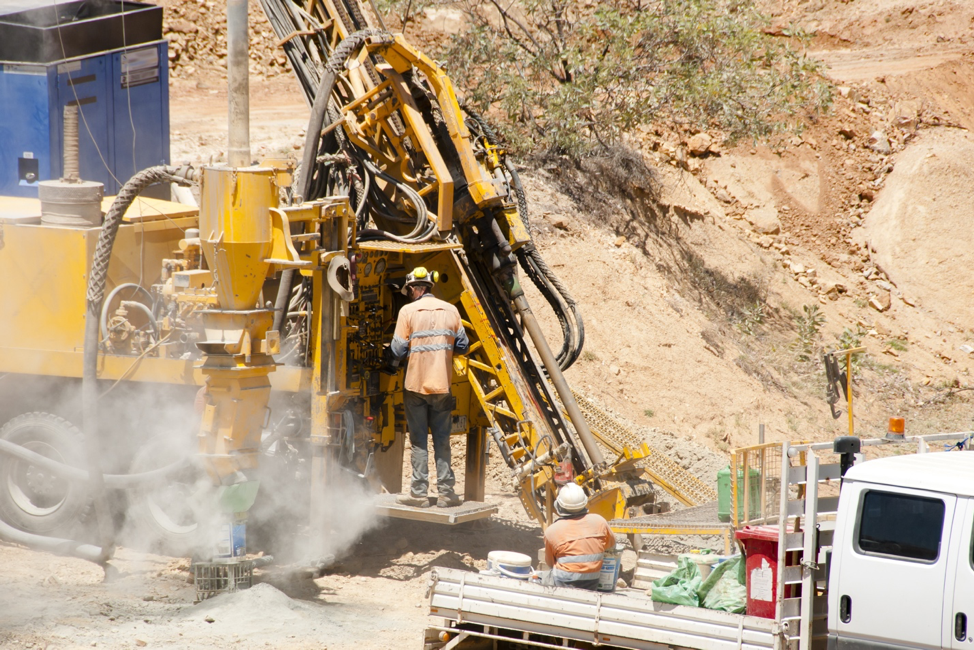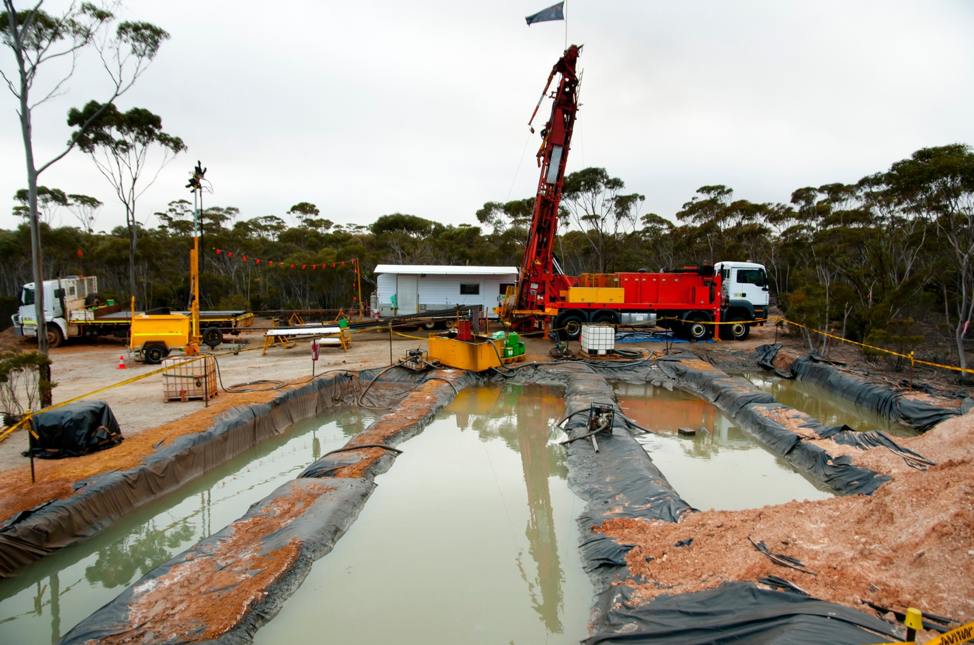
View the complete article here.
By its very nature, mineral exploration involves drilling to discover what is below the surface. While there have been a number of advances in drilling technologies in drilling techniques in the petroleum and geo-thermal sector, in mining, there have been no significant advances in mineral drilling technology for decades. Generally, mineral exploration involves percussion and rotary drilling to produce rock chips and samples of core.
Drilling is used to obtain detailed information about rock types, mineral content, rock fabric, and the relationship between the rock layers close to the surface and at depth. It is used in areas that have been selected as “targets” based on geological, geophysical, and/or geochemical methods.
There are three primary techniques that can be used for mineral exploration. The selection of a particular method will depend on a number of factors, including cost, the environment, type of equipment required, and the skill and knowledge of those involved.
Rotary Air Blasting
Rotary air blasting is both the least expensive and the simplest technique for mining exploration. It also requires limited skill. This conventional drilling technique is not without its drawbacks, however; it is generally not preferred for mining exploration because it is not possible to obtain a representative sample using rotary air blasting.
Rotary air blasting is a type of rotary drilling, where a blade bit or roller-cone bit is used to cut and break rock with a simple blade mounted on the end of a rotating drill stem. This stem is rotated while a thrust is applied to it by a pulldown mechanism that uses up to 65 percent of the weight of the machine. As the bit breaks and removes the rock using either a crushing and chipping action or a ploughing-scraping action, compressed air is supplied to the bit. The air cools the bit and flushes the cuttings back to the surface.
In this method, air from a compressor is injected through the top swivel of a rotary head. As the compressed air returns to the surface, it carries with it rock chips made by the rotating bit. It is used in soft rock materials to about 25 meters deep, or to drill through the top layer of decomposed rock and soil to get a fresh rock sample from the bedrock below. Normally, a length of conductor casing is set at the surface to avoid erosion at the top of the hole. Cuttings and air are then returned to the surface from the bit face up from the annular space between the drill pipe and the wall of the hole. This allows the loose exposed formation further up the role to fall into the hole and be removed with the cuttings from the bottom. As the exposed loose formation can mix with the specific depth sample, the result will generally not be accurate. Despite the advantages of rotary air blasting, it is often not used for this reason.

Reverse Circulation Drilling
Reverse circulation drilling, or RC drilling, is more expensive than rotary air blasting. It also requires more equipment and greater driving skills. However, RC drilling results in greater sample accuracy, making it a more popular form of mining exploration. It is the most common drilling technique used for mining exploration, particularly in South America and Australia.
RC drilling is a form of percussion drilling, by which the rock is made to fail through the use of a piston that delivers rapid impacts to the drill stem, transferring energy to the drill bit. These blows to the rock are delivered by the bit, while a rotational device makes sure that the bit hits a new rock surface with each blow. A feed force is applied to maintain rock/bit contact, and compressed air is used to remove or flush the drill cutting from the hole, advancing the hole depth efficiently. The piston can be mounted out of the hole or down the hole for quiet and efficient drilling.
With RC drilling, a dual wall drill pipe is utilized. Air is injected between the two tubes using a “side inlet swivel.” The air exits the drill string behind the bit, which can be a hammer or a tricone. The air and cuttings are forced across the face of the bit and back up inside of the “inner tube.” From there, the air and cuttings travel back to the surface out to the top of the rotary head through a deflector elbow, along a discharge hose to the cyclone. At the face of the bit, the air is prevented from rising up the annulus with a collar or shroud that is 1/8 inch smaller than the bit.
Generally, hammers are used more often in RC drilling. In softer material, or where the hammer will no longer function due to a head of water entering the hole, a tricone may be used.

Diamond Core Drilling
As with RC drilling, diamond core drilling requires a substantial amount of skill. Diamond core drilling utilizes less equipment than RC drilling, but is more expensive because it is a time-consuming process, taking approximately 5 times as long to drill an equivalent amount of rock with diamond core drilling as with RC drilling. If using diamond core drilling, added costs will include core bits, drilling additives, fuel and labor.
With diamond core drilling, a pipe encrusted with industrial diamonds is used to drill through rock layers. A “core” of rock is left in the center of the pipe, which is then recovered as a sample. This core can then be analyzed to determine more about its composition as well as the relationship between rock layers. A high rpm of 300 to 1200 is required for diamond core drilling, with weight and penetration constant to ensure that the core is not washed away. Performing diamond core drilling requires substantial skill, as in hard rock formations, too much weight can cause the bit to burn, while not enough weight can risk polishing the bit. A knowledgable operator will understand which type of bit to use, and how much weight to apply.
There are two ways that samples can be removed from a diamond coring bit. With conventional coring, the complete core barrel must be drawn up to the surface, meaning that all drill rods must be pulled out of the hole. With wire-line coring, the inner tube is lifted to the surface and lowered back to the barrel through the drill rods with a winch. This saves time because the drill rods stay in the hole. With wire-line coring, the rig consists of a high-speed rotation unit of over 1000 rpm, a feed system that provides smooth and consistent pressure on a bit, and a diesel engine to power the unit. The drill rods are handled manually because the drill pipes are shorter and lighter than with rotary drilling. Coring drills are equipped with a water pump to flush cuttings to the surface between the hole wall and drill pipe.
For mineral exploration, drilling techniques can be used to determine information about rock types, mineral content and more. There are a number of considerations that should be weighed when deciding which method to use.
The rotary air blasting technique is most often used for site investigation, environmental and geotechnical drilling and sampling into weathered and poorly consolidated material providing a soil sample. It can also be used to obtain a fresh rock sample from the bedrock below decomposed rock and soil. It is the least expensive option, but it will not result in a suitable core sample for analysis.
For hard rock types, reverse core drilling can be use to penetrate to depths of hundreds of meters, both for investigation and blasting. RC drilling allows for uncontaminated chip samples and can be used in all formation types. While it is more expensive and requires more equipment than rotary air blasting, its accuracy makes it one of the most popular mining exploration drilling techniques. It is primarily used for investigation.
Diamond core drilling is best used in consolidated formations. Compared to rotary drills, diamond core drills are small in size, and are well-suited for remote exploration sites. They may be small enough to be transported by helicopter to areas without access roads. Diamond core drilling provides intact samples, but is more expensive than other drilling techniques.
With an experienced project manager, the appropriate drilling technique can be chosen to properly define the parameters of a drilling project, including the bounds of a potential deposit. This overview of methods provides a starting point for mining companies to determine how to proceed with the exploration process.
View the complete article here.
What is the primary difference between rotary air blasting and reverse circulation drilling in mining exploration?
Rotary air blasting is a cost-effective but less accurate technique, while reverse circulation drilling, though more expensive, provides greater sample accuracy, making it a popular choice for mining exploration.
When is diamond core drilling most beneficial in mineral exploration, and what sets it apart from other drilling techniques?
Diamond core drilling is best suited for consolidated formations, offering intact samples and suitability for remote sites, distinguishing it from other techniques, although it is more time-consuming and costly.













































